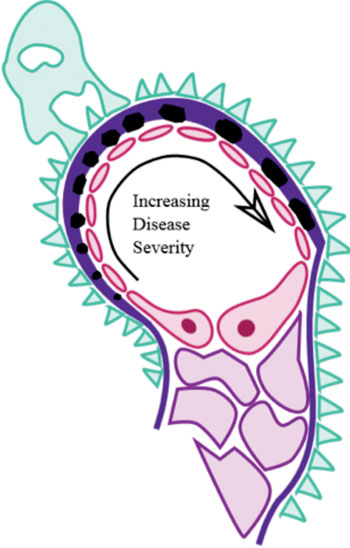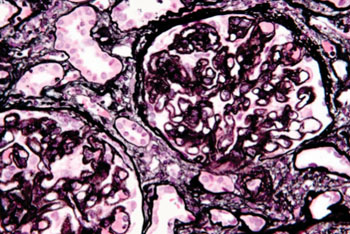Second Protein Identified for Common Kidney Failure
By LabMedica International staff writers
Posted on 02 Dec 2014
An international team of researchers has found a second protein, THSD7A, associated with a common form of kidney failure—the autoimmune “membranous nephropathy” (MN). The discovery is likely to provide an important new biomarker for the disease.Posted on 02 Dec 2014
MN occurs when kidney small blood vessels that filter wastes from blood are damaged by circulating autoantibodies. Proteins leak from the damaged blood vessels into the urine. For many people, loss of these proteins eventually leads to nephrotic syndrome. Unchecked, MN can lead to kidney failure or end-stage renal disease (ESRD). Approximately 14% of ESRD is associated with glomerulonephritis, of which MN is a common form.
As the second protein associated with MN and autoimmune response, THSD7A can be used to develop a new blood test. The research team previously discovered phospholipase A2 receptor 1 (PLA2R1) as the protein target of autoantibodies in up to 70% of people suffering from MN. However, the target antigen in the remaining 30% of patients remained unknown. Senior author Gérard Lambeau, PhD, said that the discovery is of THSD7A “and the corresponding anti-THSD7A autoantibodies in a group of about 10% of MN patients who did not have anti-PLA2R1 autoantibodies.” This finding thus identifies a distinct subgroup of MN patients with anti-THSD7A as a likely biomarker.
“The discovery of this second antigen-antibody system in MN will allow clinicians to diagnose this new form of primary (autoimmune) MN and provides a new method to monitor the disease activity in this subgroup of patients,” said co-lead authors Nicola Tomas, MD, and Laurence Beck, MD, PhD. Coauthor Jon Klein, MD, PhD, said, “The team has now found another protein that impacts additional patients with MN. Once a blood test is available, we will have additional tools to follow the response to treatment and possibly reduce the number of kidney biopsies necessary for disease detection.”
“Our discovery of PLA2R1 as the target of autoantibodies energized research and accelerated the pace of discovery in this uncommon but serious cause of kidney disease,” said David Salant, MD, “Hopefully, our current findings will spur further research to identify the target antigen to benefit the remaining 20% of patients with MN.”
“This discovery also represents an excellent example of international collaboration, with the decision to combine the independent discoveries of this target antigen by groups on both sides of the Atlantic into a jointly authored manuscript,” emphasized Dr. Beck and Prof. Rolf Stahl. The team consisted of researchers from France, Germany, and the USA.
The study, by Tomas NM, Beck L, et al., was published online ahead of print November 13, 2014, in the New England Journal of Medicine. It was also presented at the American Society of Nephrology (ASN) (Washington DC, USA) Kidney Week 2014 (November 11–16, Philadelphia, PA, USA; Abstract TH-OR071).
Related Links:
American Society of Nephrology (ASN)
















